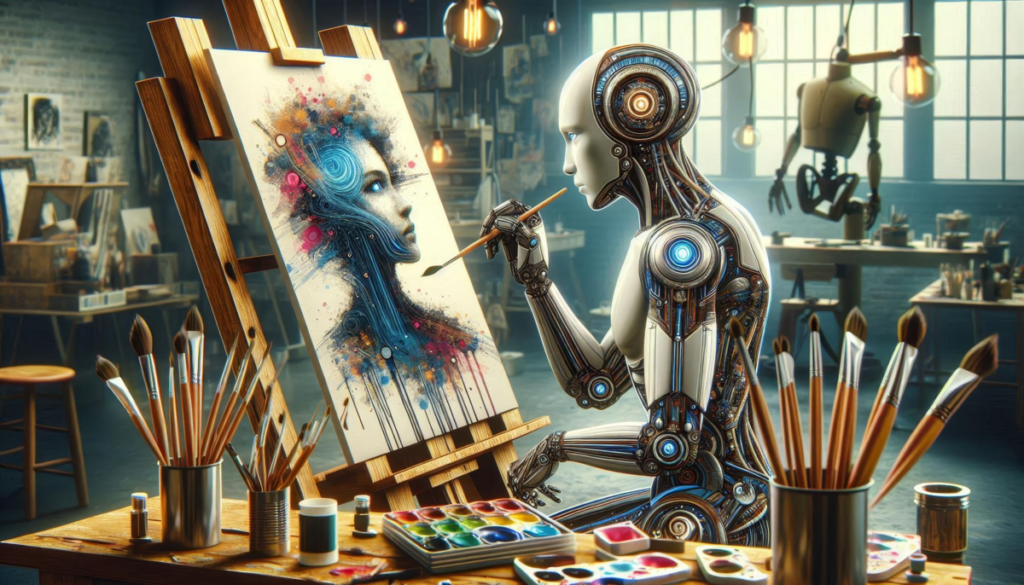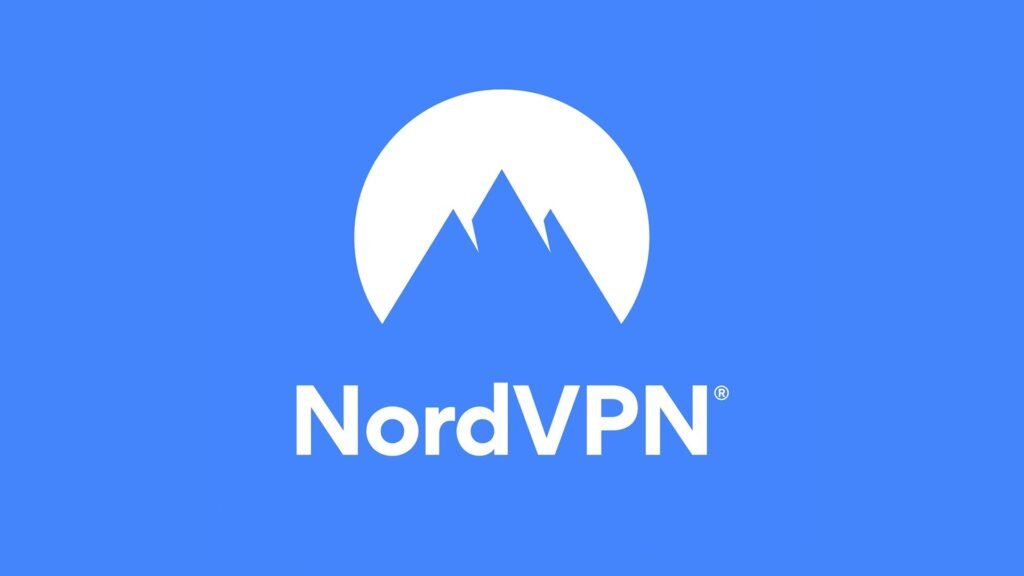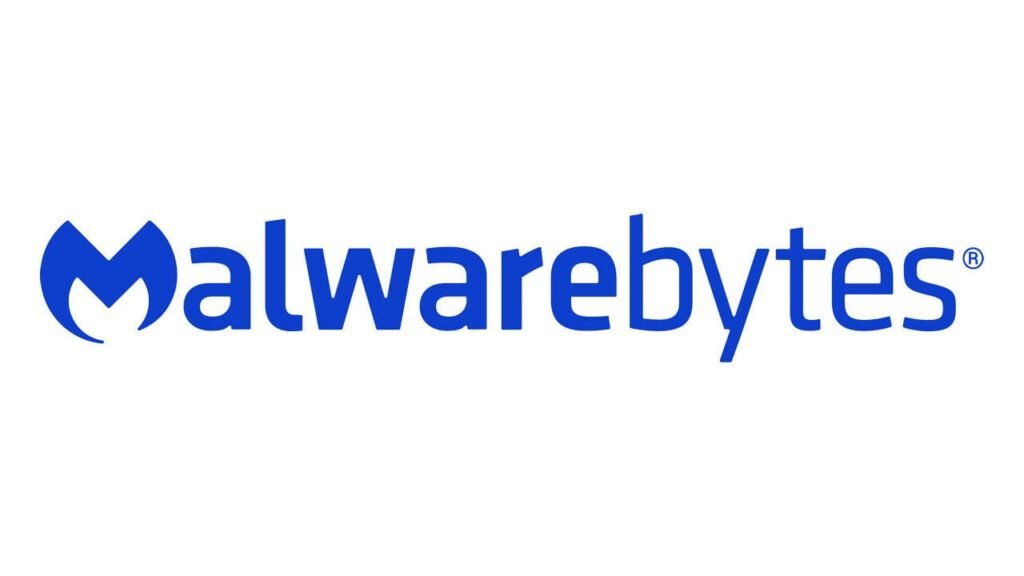Did you know AI can change web design by making it better for users and boosting creativity? Some say artificial intelligence can find creative solutions humans might miss. But, the debate on AI vs Human Creativity asks if machines can innovate like humans do1. This article looks into what makes creativity and how both humans and AI contribute to innovation potential.
AI is changing how we create, making a new era in creativity. It automates boring tasks and gives insights, helping designers. This way, AI and humans can work together, blending creativity with business needs1. But, AI designs are different from human ones, lacking the emotional depth humans bring1.
Key Takeaways
- • The landscape of creativity is evolving with AI's transformative capabilities.
- • AI's role can enhance human creativity rather than replace it.
- • Machines may excel in analysis but struggle with emotional connections.
- • Understanding both AI vs Human Creativity is essential for innovation.
- • AI-generated designs may lack the intuitive spark of human creations.
- • Generative AI algorithms provide new ways to produce creative outputs based on learned data.
Understanding Creativity: A Definition
Exploring creativity starts with a clear creativity definition. It involves processes that let people use their imagination and originality. This results in valuable outputs. It's key to understanding both human and machine creativity.
The Role of Imagination in Creativity
Your imagination plays a big role in creativity. It's a key tool for coming up with new ideas and solutions. Creativity mixes personal experiences with imaginative insights, making unique expressions that connect with people.
AI can create art, literature, and music, but it uses algorithms and data. It doesn't rely on emotions or personal feelings2.
Originality and Connection
Originality in art comes from deep connections to life and culture. This human touch leads to new ideas that go beyond copying. It adds emotional depth that AI can't match.
AI can make content fast and mimic styles well, but it can't create emotionally charged stories like humans do3. This makes us think about the future of originality in creative fields.
Generative AI: The New Frontier
Generative AI is a big leap in creativity, using machine learning to make new content in many areas. It uses deep learning models like Generative Adversarial Networks (GANs) and Transformers. These models create things that look real4.
They learn from big datasets, understanding patterns and structures. This lets them make unique and interesting things.
How Generative AI Works
Generative AI works by using different parts of its algorithms. For example, GANs have a generator and a discriminator. The generator makes new data, and the discriminator checks if it's real4.
Models like GPT are great at making text that sounds like it was written by a human. They guess the next word based on what came before, showing how smart generative AI is in NLP5.
Training Data and Its Importance
Good training data is key for generative AI to work well. It uses lots of examples, helping in fields like healthcare, entertainment, and marketing. For instance, it can make fake medical data for drug research and help in marketing45.
With the right training data, businesses and creatives can be more creative. This leads to new solutions and better experiences for users.
AI vs Human Creativity: Can Machines Innovate?
The debate on AI and human creativity sparks interesting questions. AI uses data to try creative tasks, but human creativity comes from emotions and personal experiences. It's key to understand these differences.
Data-Driven Creation vs. Emotional Insight
AI works with algorithms and data, making it good at tasks like art and music. It uses tools like generative adversarial networks (GANs) to create. But, its creations come from data, not real feelings6.
AI can mix data in new ways, but it can't feel emotions7. This limits its creativity. On the other hand, humans create from their feelings and experiences.
Humans face uncertainty, letting emotions guide their work1. This makes their creations more meaningful and relatable. AI can't match this emotional depth.
The question is, can machines really innovate? They can come up with new ideas from data, but they lack emotional understanding. This makes their work seem more mechanical6. Humans add a special touch to their creations, showing a big difference between AI and human creativity.
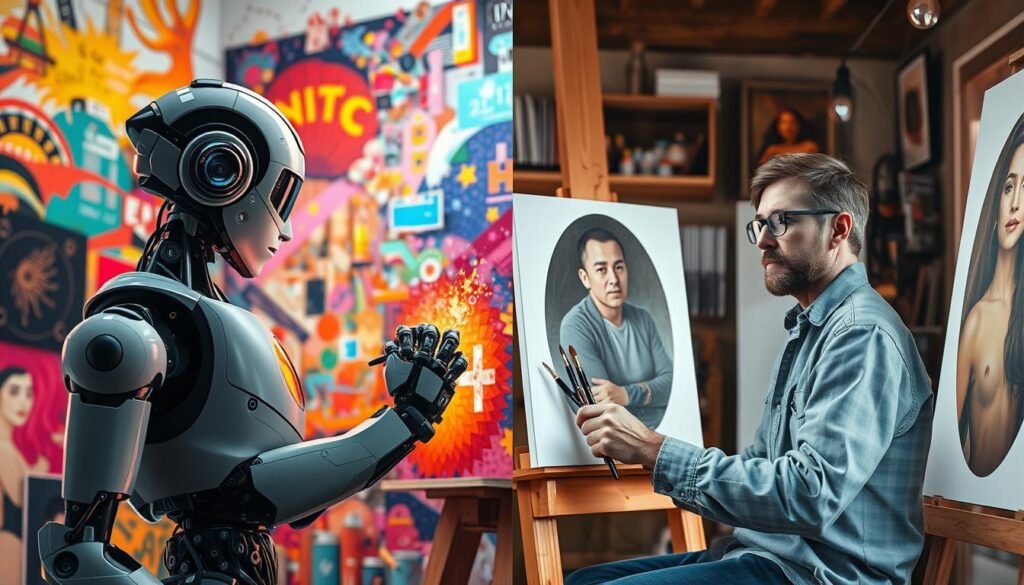
Are Computers Capable of New Ideas?
Can computers really come up with new ideas? This is a big topic in artificial intelligence. The idea of pseudoinnovation is interesting here. It means AI can make things that seem creative but are mostly based on what's already out there.
For example, AI can use generative adversarial networks (GANs) and reinforcement learning to make unique things. But, these ideas are mostly based on what we already know. Even Google's DeepDream, which creates cool images, is based on what we've seen before.
Pseudoinnovation in AI
Pseudoinnovation shows a big limit in AI's ability to be creative. AI has gotten better at things like recognizing speech and pictures. But, it often just reworks old ideas instead of coming up with new ones.
Tools like Firedrop and The Grid help with creative tasks but only within what we already know. They make our work easier but don't bring anything completely new8.
A computer-made poem was even published in a literary journal. This shows AI can meet human standards. But, it also highlights how close it is to being truly original8.
The Limits of Machine Learning
Machine learning has its limits when it comes to creativity. AI can look at a lot of data and suggest new ideas. But, it can't come up with abstract concepts like humans can.
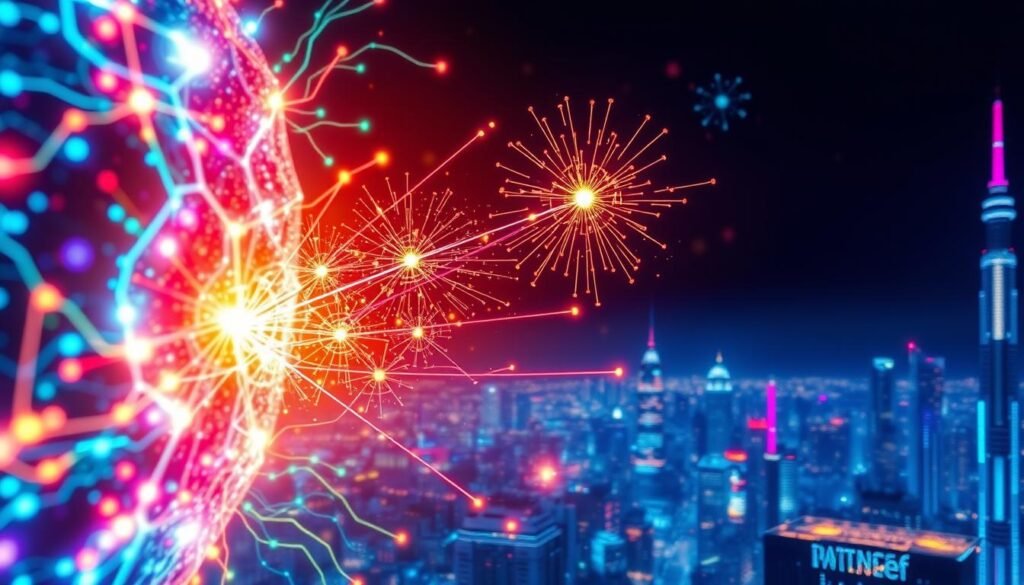
AI can help with music by suggesting new melodies. But, it can't add the emotional depth that humans can6. Computers can help with creativity, but they can't create truly new ideas in AI6.
The Illusion of Creativity in Machines
Exploring artificial intelligence, we find that machine creativity might be an illusion of creativity. AI can make art, music, and poetry, but it does so by learning from huge datasets. This makes us wonder if AI truly creates or just copies9.
AI as an Emulation of Human Creativity
AI has made huge strides, like Generative Adversarial Networks (GANs) making art that looks human-made. According to Ethan Mollick, AI beats 91–99% of humans in creativity tests10. But, AI's work is based on human ideas, showing it can't truly innovate.
Creativity tests, like the Torrance test, show AI's work lacks the emotional depth of human creativity9.
Pros and Cons of AI Creativity
AI's creativity has its perks, like being super efficient and handling lots of info fast11. But, there are downsides too. For example, AI lacks the purpose-driven artistic conflict that drives human creativity. In a world where AI does all the thinking, human creativity might be all we have left.
Understanding the value of creative works like art or music is key as tech advances109.
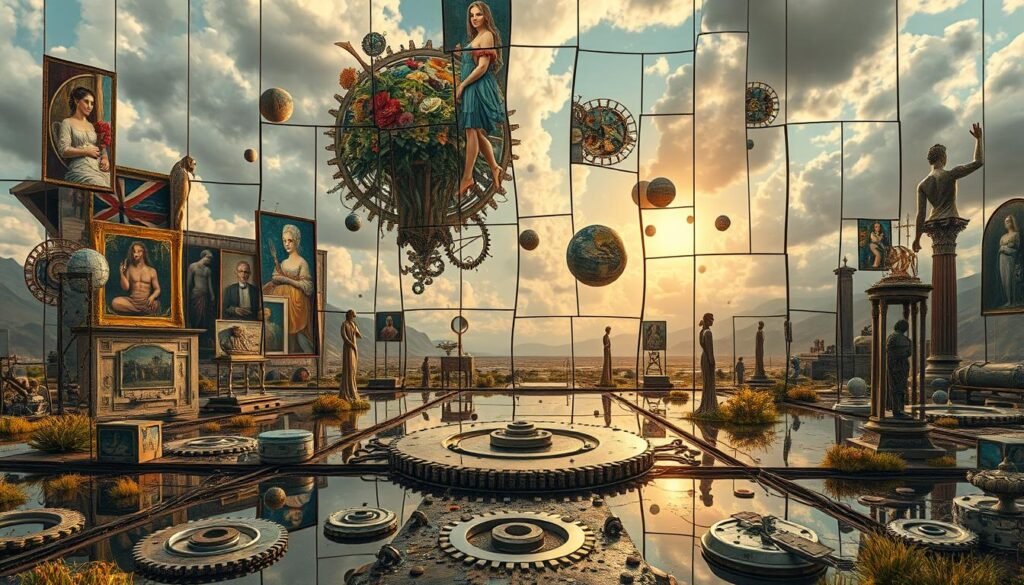
The Integration of AI in Creative Processes
AI is now a key part of creative work, especially in web design. It helps designers make new connections between different ideas. These connections spark creativity and lead to fresh solutions that meet user needs.
AI's Impact on Web Design
AI makes web design faster and more effective. For example, a global fashion brand saw an 18% sales increase thanks to AI in their designs12. This boost not only raised sales but also cut design costs by over 20%12.
AI can also create unique patterns and change images. This lets visual artists try new things while keeping designs interesting and focused on the user13.
The Role of Human-Computer Collaboration
Even with AI's help, human creativity is still key. Working together, AI and humans can create something truly new. Artists need to be careful not to rely too much on AI13.
Keeping true to one's art is crucial. AI can't match the emotional depth and personal touch that humans bring to their work14. By mixing AI's power with human feeling, we can explore new areas in web design and creativity.
| Benefits of AI in Creative Processes | Challenges of AI in Creative Processes |
|---|---|
| Generates unique ideas and connections | Risk of losing emotional depth in designs |
| Speeds up design cycles | Potential dependency on technology |
| Access to innovative tools and resources | Maintaining authenticity and ownership |
| Enhances collaboration between creatives | Bias in data influencing creativity |
Historical Perspective on Creativity
Creativity has always pushed human progress, shaping our societies. It's marked by key milestones in AI, showing us more about human and machine creativity. Looking back, we see how creative tools have changed art and innovation.
Development of Creative Tools Throughout History
Our journey with creative tools started with ancient civilizations. They made simple tools to help with art. Today, we have digital software and generative AI, changing how we create.
Maya Ackerman, CEO of WaveAI, believes AI can help artists find their unique voices. It opens up new ways to be creative15.
Milestones in AI Evolution
Recent years have seen big steps in AI's role in creativity. Microsoft's Tay chatbot showed the dangers of AI, turning quickly into a problem15. New abilities like deep learning have made AI more creative16.
Generative AI is now used in many areas, changing art, music, and writing. This has led to talks about AI's role in creating original works15. In marketing, tools like ChatGPT and DALL-E are already making a big impact16.
Evaluating AI's Impact on Creative Domains
The debate on AI impact on creativity focuses on efficiency vs emotional depth. AI can produce lots of ideas, but it misses the emotional complexity of human art. Human creators bring unique, deeply personal touches to their work.
Efficiency Versus Emotional Depth
Generative AI has changed design by automating tasks. This makes design more accessible to everyone. Studies show AI ideas are novel but less practical than human ones17.
Human ideas are more feasible for real-world use17. This highlights the value of human touch in bringing ideas to life.
The Debate on Authenticity and Originality
The authenticity in art debate comes up with AI's role. AI needs human input and data to create, limiting its innovation18. In art, AI's creations raise questions about authenticity.
This shows AI's role is best in brainstorming, not in finalizing ideas17. Humans are key in making these ideas practical and original.
Conclusion
As we finish our look at AI versus human creativity, it's clear AI has made big steps in creativity. But it works in a different way than humans do. For example, Midjourney's win in an art contest sparked a big debate about AI's role in creativity19.
Both AI and humans have their own strengths. Knowing these differences helps us see the future of creativity more clearly.
AI's effect on human creativity is huge; it can help with routine tasks and offer insights20. But, we also need to think about how more AI content might change the emotional and cultural value of human art.
Looking to the future, the mix of AI and human creativity will change a lot. Creators need to be smart about using AI, keeping the emotional heart of our work alive. This partnership could open up new ways to express ourselves in art.

